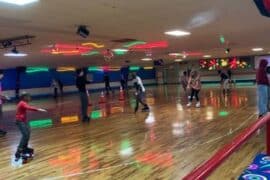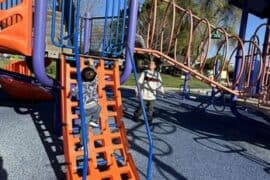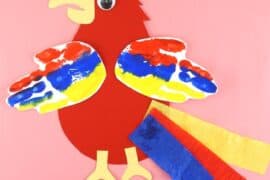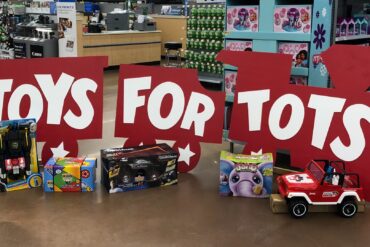Beginner’s Guide to Using Cloth Nappies: A Sustainable Choice for Modern Parents
Welcome, eco-conscious parents and caregivers! ? Are you looking to embrace a sustainable lifestyle while providing the best care for your little bundle of joy? You’ve landed in the perfect spot! Today, we’re going to embark on a wonderful journey through the world of cloth nappies, unraveling the mysteries and simplifying the process to make your eco-friendly parenting adventure an absolute breeze!
First, let’s chat about the benefits:
- Eco-Friendly: By choosing cloth nappies, you’re making a significant impact on our planet’s health. Less waste in our landfills, and less pollution! ?
- Cost-Effective: While there’s an initial investment, in the long run, you’ll be saving a pretty penny! No more weekly purchases of disposable nappies.
- Gentle on Baby’s Skin: Cloth nappies are made from natural materials, which makes them super soft and less likely to cause rashes or allergic reactions on your baby’s delicate skin. ??
- Adorable Designs: Let’s be honest, cloth nappies come in the cutest patterns and colors. Your baby’s bottom will be trendsetting all around town!
Still with me? Great! Let’s dive into the “how-to” section of our guide and get you prepped and ready to tackle the cloth nappy challenge with confidence!
Choosing the Right Cloth Nappy
Just like picking the cutest onesie, selecting the right cloth nappy for your baby is key. There are several types to consider:
- Prefold: These are a budget-friendly option, consisting of a rectangular cloth folded into three sections.
- Fitted: More like a disposable, fitted nappies have elastic around the waist and legs, with multiple snaps or velcro to secure them in place.
- All-In-One (AIO): The convenience king! AIOs are the closest to disposables in terms of design, with absorbent layers sewn in and no separate parts.
- Pocket Nappies: Featuring a waterproof outer shell and a pocket for inserting absorbent pads, these are customizable for absorbency and great for overnight.
Pro Tip: Start with a small variety of styles to see what works best for you and your baby. Every little bum is unique!
Prepping Your Cloth Nappies
Before you start wrapping that cute booty, prepping your cloth nappies is a critical step.
- Wash Before Use: New cloth nappies should be washed to increase their absorbency. Follow the manufacturer’s guidelines for the first wash.
- Build Up Absorbency: Some natural fibers like hemp or bamboo might need a few washes before reaching maximum absorbency.
Now, I know what you’re thinking, ‘Washing? That sounds like extra work!’ Fear not, my friend, because once you get into a routine, it’s a walk in the park. And guess what? We’ll cover the ins and outs of washing in a bit, so stick around!

Comprehensive Cloth Nappy Guide for Parents: Nurturing Baby the Eco-Friendly Way
5 Cloth Nappy Prep Tips for Parents
Embarking on your cloth nappy journey is exciting, but before you jump in, there are a few key things to know. Here’s a rundown of essentials every parent should be clued in on:
- Understand Different Fabrics: Cloth nappies come in a variety of materials such as cotton, bamboo, and hemp. Cotton is user-friendly and durable, while bamboo is incredibly absorbent and antimicrobial. Hemp, too, boasts high absorbency and is eco-friendly, but remember it might shrink after the first wash.
- Get the Fit Right: A proper fit is crucial to prevent leaks. Make sure the nappy snugly fits around the waist and thighs. If it’s too loose, you might have to deal with unexpected messes!
- Quantity and Storage: Invest in enough cloth nappies to last a couple of days (approximately 20-24 for newborns, as they can go through 8-10 nappies a day). You should also think about where you’ll store used nappies before washing – a dry pail with a liner is a popular choice set up neatly in the nursery or bathroom.
- Accessorize Wisely: Beyond nappies, consider liners and boosters. Liners (disposable or reusable) make cleanup easier, while boosters enhance absorbency for nighttime or heavy wetters. Wet bags are also a must-have for on-the-go changes to keep damp nappies contained.
- Establish a Washing Routine: Having a consistent laundering process will make your life much simpler. Separate the solids (if you’re using liners, this will be a breeze), store used nappies in a dry pail, and wash every 2-3 days to avoid odors and staining. Use a gentle, cloth-safe detergent and avoid fabric softeners that can impact absorbency.
Remember, every child is different and what works for one parent may not work for another. It’s all about finding your own rhythm and what suits your baby the best.
Learning the Lingo: Anatomy of a Cloth Nappy
As you delve into the cloth nappy world, you’ll encounter a whole new vocabulary. Here’s a brief outline of key terms:
- Snappi: A modern replacement for safety pins, Snappis are handy devices that secure cloth nappies without the risks of poking.
- Inserts: Absorbent pads that are placed within a pocket nappy or laid in a cover to soak up moisture.
- Boosters: Additional layers for extra absorbency, often used overnight or for heavy wetters.
- Wet Bag: A waterproof bag for storing soiled nappies when out and about.
- PUL (Polyurethane Laminate): A type of waterproof fabric used in the outer layer of many cloth nappies.
Mastering the Art of Cloth Nappy Folding
Feel like folding cloth nappies requires origami skills? Not to worry! With these simple folding techniques, you’ll be a pro in no time:
- The Angel Wing Fold: Great for prefolds, this fold offers great coverage and is excellent for holding in newborn poos.
- The Jelly Roll Fold: Roll the edges inwards to create a barrier against leaks – perfect for infants.
- The Pad Fold: A no-fuss option that is simply folding the nappy into a pad shape and tucking it into a cover or pocket nappy.
- The Bikini Twist: Cross the nappy underneath your baby’s bum to provide a better fit around the legs. This is a favorite fold for many due to its simplicity and effectiveness.
Feel free to experiment with different folds to discover what offers the best fit and leak prevention for your baby.
Conquering the Wash: Keeping Cloth Nappies Clean
Laundry is a major part of cloth nappy use, but with these tips, you can keep your nappies fresh and effective:
- Pre-rinse in Cold Water: A pre-rinse helps remove any remaining waste before the main wash.
- Use an Appropriate Detergent: Choose a detergent that’s free from fragrances, dyes, and enzymes to avoid irritating baby’s skin and deteriorating the nappy fabric.
- Avoid Fabric Softeners and Bleach: These can damage the absorbency of your nappies and irritate your baby’s skin.
- Sun Dry When Possible: The sun has a natural bleaching effect and can help eliminate any stubborn stains. Sun drying also saves energy and preserves the nappy’s condition.
- Stick to the Routine: Washing every 2-3 days prevents mold, mildew, and ammonia smells from setting in.
Setting up a consistent and effective laundering system will ensure your nappies last through multiple children, making your sustainable investment even more worthwhile.
See more great Things to Do with Kids in New Zealand here. For more information see here
Disclaimer
The articles available via our website provide general information only and we strongly urge readers to exercise caution and conduct their own thorough research and fact-checking. The information presented should not be taken as absolute truth, and, to the maximum extent permitted by law, we will not be held liable for any inaccuracies or errors in the content. It is essential for individuals to independently verify and validate the information before making any decisions or taking any actions based on the articles.




